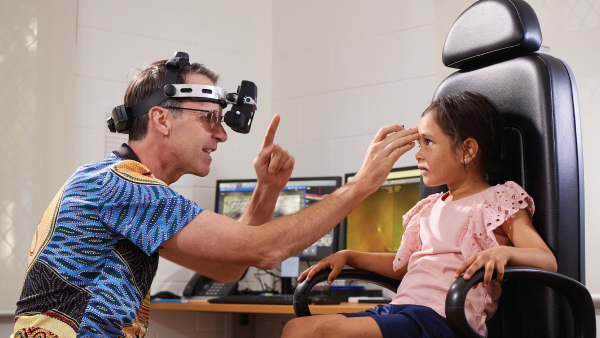You are viewing 1 of your 3 articles before login/registration is required
DOs Make the Difference
Why dispensing opticians are vital for well-fitting spectacles
I was researching an IT company last week and, in the course of being nosey, I had a look at the list of directors and their photographs – all very regular until the last-listed non-executive director. Wearing a round pair of acetate specs with a keyhole bridge, I noticed the DBL was too small, the bridge too narrow, and the whole thing sitting a good 10 mm higher than it should. You could see the director’s head either side of the front, and he was of an age where I expect the lenses would be progressive. Lord knows how they were performing or if any “as worn measurements” had been taken!
We see it all the time – on people walking around, on TV, in adverts and magazines – I even saw an example of a badly fitting frame in an optical advert in a trade magazine! Of course, we don’t know where these poor-fitting spectacles were purchased; hopefully, they were all bought online with no advice given. But I bet a few weren’t!
While discussing this at work, a colleague pointed out some other atrocities we have seen over the past few years. Rather than accept this free-flowing market, shouldn’t we be campaigning for all dispensing to be supervised by a qualified DO?
Radical thinking, I know. And before such a development, our regulator would insist on evidence of anyone coming to any harm or making a complaint. Therein lies our challenge. I am not advocating that every person we see with poorly fitting specs should complain. Nor would I try to accumulate anecdotal evidence of minor accidents that happen while adjusting to new or different specs – this is just not scientific enough. But what can we do to improve standards?
Speaking at the unveiling of a spectacle collection, one of my recently qualified DOs reiterated the positive features of the dispense. Adjusting a customer’s frame, the DO explained what features of the bridge made this particular pair of glasses a good choice, how the length to bend was just right, and how the sides didn’t need adjusting more than the angle of drop. Everything the DO said reinforced the dispensing decisions made earlier, reassuring the patient that the frame selection had been appropriate and reminding them what a well-fitting frame looks like.
We all know that DOs do a good job – we just need to remember to explain the difference they make when we speak to our patients!
The New Optometrist Newsletter
Permission Statement
By opting-in, you agree to receive email communications from The New Optometrist. You will stay up-to-date with optometry content, news, events and sponsors information.
You can view our privacy policy here
Sign up to The New Optometrist Updates
Permission Statement
By opting-in, you agree to receive email communications from The New Optometrist. You will stay up-to-date with optometry content, news, events and sponsors information.
You can view our privacy policy here
Sign up to The New Optometrist Updates
Permission Statement
By opting-in, you agree to receive email communications from The New Optometrist. You will stay up-to-date with optometry content, news, events and sponsors information.
You can view our privacy policy here







